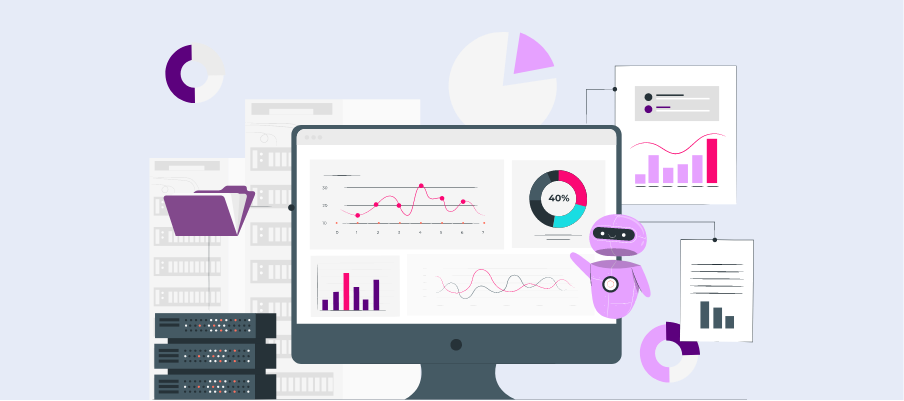Implement Robust Internal Controls: Set up controls like segregation of duties, restricting access to sensitive databases, and enabling review workflows for data entry.
How to Validate and Cleanup Data for Financial Reporting

Financial reporting is a task where accuracy is non-negotiable. Reliable financial data underpins critical decisions, keeps regulatory requirements in check, and builds trust among stakeholders. But what happens if the data you’re working with is messy—full of errors, duplicates, or missing details? This is where data validation and cleanup come in.
This guide will walk you through understanding the basics of data validation and cleanup, actionable steps to ensure your data is accurate, tools and techniques to help you streamline the process, best practices for maintaining clean data, and solutions to common challenges. By the end, you'll have a roadmap to manage your organization’s financial data effectively and confidently.
Understanding the Basics of Data Validation and Cleanup
Before we jump into actionable steps, it’s important to define data validation and cleanup and understand why they matter in financial reporting.
What is Data Validation?
Data validation is the process of ensuring that data is accurate, consistent, and reliable before it is used in financial reports or analyses. It involves checking data entries to confirm they adhere to predefined rules or standards, such as correct formatting, range limits, or completeness.
This step is crucial in preventing errors that can lead to inaccurate financial insights and decisions. By implementing robust data validation procedures, organizations can build trust in their data and create a strong foundation for effective financial management.
What is Data Cleanup?
Data cleanup is the process of identifying and correcting errors, inconsistencies, and inaccuracies in datasets to ensure reliability and usability. This often involves addressing duplicate records, incomplete information, formatting inconsistencies, and outdated entries. By meticulously cleaning your financial data, you can reduce errors, enhance decision-making, and improve reporting accuracy.
Think of data cleanup as the foundation that supports all subsequent financial processes, providing a clear and trustworthy view of your organization's performance. When done regularly, it helps maintain the integrity of your data and prevents small issues from turning into bigger problems over time.
Steps to Validate Financial Data
The first step toward clean financial data begins with robust validation practices. Here's how you can make sure your data adheres to quality standards.
Step 1: Establish Clear Validation Criteria
Define specific criteria that financial data must meet to be considered accurate and complete. This might include ensuring all required fields are filled out, values fall within acceptable ranges, and data formats are consistent. Having clear guidelines in place simplifies the validation process and reduces ambiguity.
Step 2: Cross-Check Data Sources
Compare data across multiple systems or reports to ensure consistency. For example, reconcile transactions from bank statements with internal ledgers. Any discrepancies should be investigated and resolved promptly to maintain accuracy.
Step 3: Use Automation Tools
Leverage technology to streamline the validation process. Many financial software applications offer built-in validation functions or customizable rules to automatically flag potential errors, saving time and minimizing human oversight.
Step 4: Perform Regular Reviews
Schedule routine checks to review and validate financial data. Regular audits allow you to catch and correct inconsistencies early, maintaining data integrity over time.
Step 5: Document and Address Issues
When errors are identified, document the root cause and the steps taken to resolve them. This process not only helps prevent recurrence but also creates a useful record for audits and compliance purposes.
Steps to Clean Up Financial Data
Validation alone won’t fix existing issues. This is where cleanup practices come into play.
Step 1: Identify and Isolate Problem Areas
Start by reviewing your financial records to pinpoint areas where inconsistencies, missing data, or errors are present. Use tools or reports that highlight anomalies, such as duplicate entries or unusual transactions. Isolating these problem areas ensures you focus on the most critical issues first.
Step 2: Reconcile Accounts
Reconciliation is a fundamental step in cleaning financial data. Compare your records with external statements, such as bank statements or vendor invoices. This step helps identify discrepancies and ensures your financial data aligns with actual transactions.
Step 3: Standardize Data Formats
Ensure that all financial data is consistent in format, such as dates, currency, and naming conventions. Standardization reduces confusion and errors, making your records easier to understand and maintain over time.
Step 4: Remove Duplicate or Unnecessary Records
Go through your records to remove duplicate entries, outdated information, or irrelevant transactions. Streamlining your data not only improves accuracy but also enhances the efficiency of your systems.
Step 5: Implement Data Cleansing Tools
Make use of software tools designed for data cleansing to automate repetitive tasks, such as identifying inconsistent entries or formatting errors. This can save valuable time and ensure a higher level of precision in your cleanup process.
Step 6: Review and Validate Cleaned Data
After making corrections, conduct a thorough review to confirm that the cleaned data is accurate and complete. Validation at this stage safeguards against inconsistencies and ensures you can rely on your financial records for strategic decision-making.
Cleaning up your financial data may seem daunting, but breaking the process into manageable steps makes it achievable. By prioritizing accuracy and consistency, you set a solid foundation for reliable financial reporting.
Best Practices for Sustainable Data Quality
Data validation and cleanup require ongoing effort. Follow these best practices to maintain high-quality data over time.
Conduct Regular Audits and Reviews: Schedule frequent data integrity checks, particularly before financial reporting periods, to catch issues early.
Train Staff on Data Management Practices: Invest in training programs to raise awareness of data quality’s importance and improve staff’s ability to maintain clean records.
Maintain Documentation: Create a comprehensive policy document that outlines your organization’s data validation and cleanup processes.
Overcoming Common Challenges
Maintaining high data quality is crucial, but it comes with its challenges. By identifying these common obstacles and applying proactive solutions, you can ensure more accurate and reliable data.
Data duplication: Duplicate records can lead to inaccuracies and inefficiencies. Use automated de-duplication tools and set clear data entry standards to minimize this issue.
Inconsistent data formats: Variations in data formats can disrupt analysis and reporting. Standardize all data entries and train staff to follow these guidelines.
Incomplete or missing data: Gaps in data can negatively impact decision-making. Conduct regular audits and apply data enrichment strategies to fill in missing information.
By investing in the right tools, staying adaptable, and fostering accountability, you can maintain the integrity of your data effectively.




